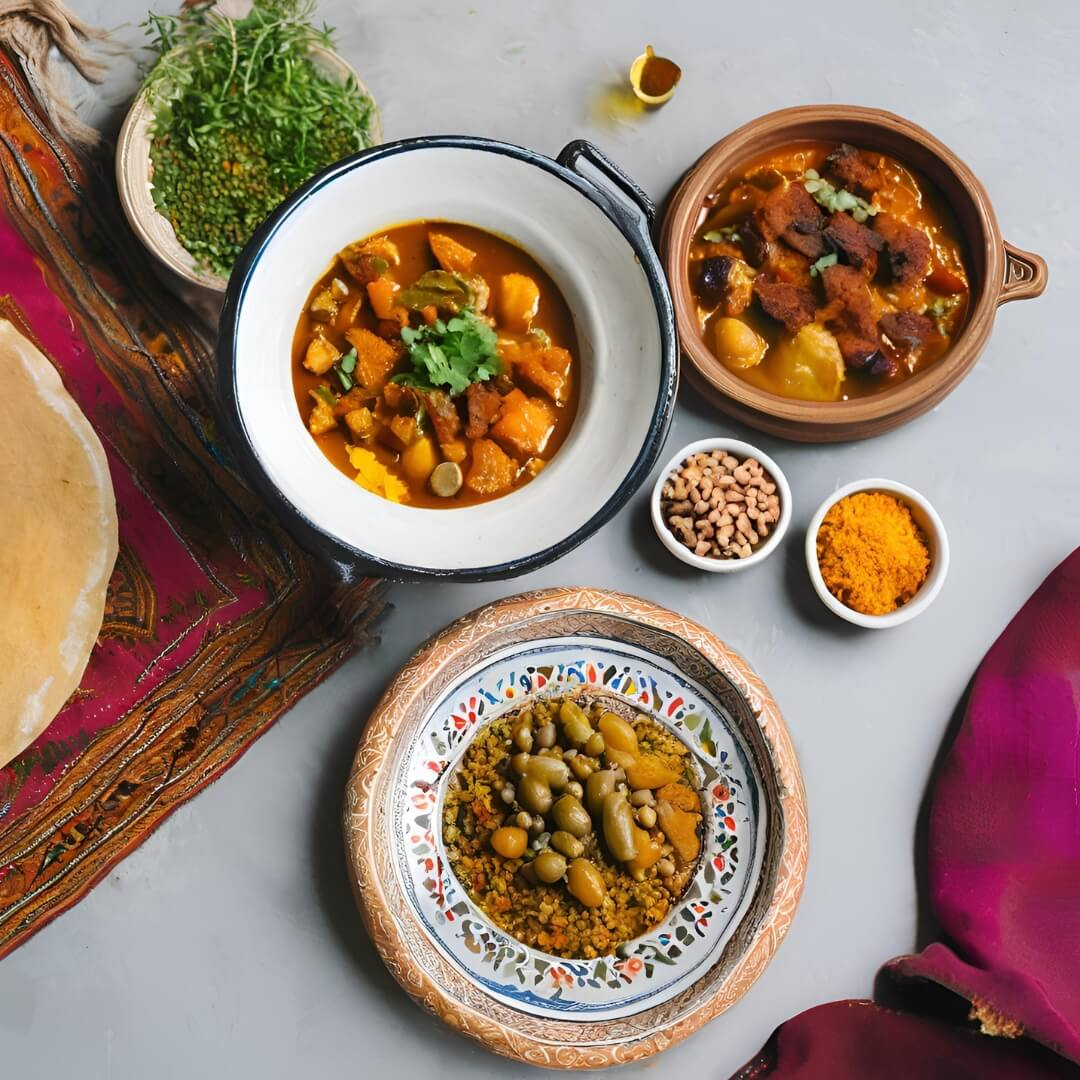Love exotic flavors? This Moroccan Breakfast Tagine recipe features 3 key ingredients for an authentic, aromatic experience. Discover now.
Introduction: Can Breakfast Be Both Exotic and Comforting?
Imagine waking up to the aromatic blend of sweet and savory flavors, with tender eggs nestled in a stew of spiced tomatoes, onions, and fragrant herbs—all cooked in a traditional tagine. Sounds like breakfast magic, right? Well, it’s easier than you think! In this blog post, we’ll show you how to make the best Moroccan breakfast tagine using three key ingredients that guarantee authentic flavor every time. Let’s dive in!
For more ideas on incorporating global flavors into your meals, check out our international cuisine guide .
Overview: Why This Recipe Is Special
The Moroccan breakfast tagine combines the rich, earthy spices of Morocco with the simplicity of eggs and vegetables, creating a dish that’s both comforting and exotic. Whether served as a morning treat or a light brunch, this tagine is perfect for anyone looking to explore Middle Eastern flavors.
Key Features:
- Time Requirement: Prep time is about 15 minutes, and cook time takes another 20–25 minutes.
- Difficulty Level: Beginner-friendly—no fancy techniques required!
- Health Benefits: Eggs provide protein, while vegetables deliver vitamins and fiber. For more information on nutrient-dense meals, explore this resource by Healthline .
This Moroccan breakfast tagine is not only delicious but also packed with cultural significance and nutrition.
Essential Ingredients: The Building Blocks of Success
Here’s what you’ll need to create the ultimate Moroccan breakfast tagine :

Main Ingredients:
- Tomatoes : Provides the base for the tangy, flavorful sauce.
- Spices (Cumin, Paprika, Saffron) : Adds depth and warmth to the dish.
- Eggs : Offers creaminess and protein when poached in the tagine.
Optional Add-ins:
- Fresh herbs (like cilantro or parsley) for freshness
- Chopped olives or preserved lemons for tanginess
- Crusty bread or couscous for soaking up the sauce
Substitutions and Variations:
- Use canned tomatoes if fresh ones aren’t available.
- Swap saffron for turmeric if you prefer a milder flavor.
- Experiment with different proteins like chickpeas or chicken for added heartiness.
Step-by-Step Instructions: Your Roadmap to Success
Follow these simple steps to whip up the best Moroccan breakfast tagine . We’ve included helpful tips along the way!
| Step | Instructions | Tips & Techniques |
|---|---|---|
| Prepare the Sauce | 1. Heat olive oil in a skillet or tagine over medium heat. 2. Add diced onions and sauté until translucent. 3. Stir in minced garlic, cumin, paprika, and saffron, cooking for 1 minute. | – Don’t overcrowd the pan; cook onions in batches if necessary. – Toasting spices enhances their aroma and flavor. |
| Cook the Tomatoes | 1. Add chopped tomatoes, salt, and pepper to the skillet. 2. Simmer for 10–15 minutes until the sauce thickens slightly. | – Crush tomatoes lightly with a spoon for a smoother consistency. – Adjust seasoning based on preference. |
| Poach the Eggs | 1. Create small wells in the tomato sauce and crack an egg into each well. 2. Cover the skillet and cook for 5–7 minutes, or until the whites are set but the yolks remain runny. | – Ensure the sauce is simmering gently to prevent breaking the eggs. – Customize doneness by adjusting cook time. |
| Garnish and Serve | 1. Sprinkle fresh herbs, chopped olives, or preserved lemons over the top. 2. Serve hot with crusty bread or couscous on the side. | – Presentation matters—add colorful toppings for visual appeal. – Serve immediately for maximum freshness. |
Assembly: Putting It All Together
Now that you’ve prepared all the elements, let’s talk about assembly and presentation.
- Start by building the flavorful tomato-based sauce with onions and spices.
- Simmer the sauce until it thickens slightly, then create wells for the eggs.
- Gently crack eggs into the sauce and cover to poach them perfectly.
- Garnish with fresh herbs or olives before serving with bread or couscous.
Pro tip: For an authentic touch, serve with warm pita bread or flatbread for dipping into the rich sauce.
Storage and Make-Ahead Tips: Keep It Fresh
If you’re planning ahead or want leftovers, here’s how to store and reheat your Moroccan breakfast tagine :
- Storage: Allow the dish to cool completely, then transfer it to an airtight container. Store in the refrigerator for up to 3 days.
- Reheating: Reheat gently in a skillet over low heat, adding a splash of water or broth to adjust consistency.
- Freezing: Not recommended due to texture changes in the eggs and vegetables.
For even more variation ideas, see our other Asian-inspired recipes here .
Recipe Variations: Spice Things Up!
Once you’ve mastered the classic version, try these creative twists to keep things exciting:
Variation 1: Spicy Kick
Add diced jalapeños or red pepper flakes to the sauce for extra heat.
Variation 2: Protein-Packed Option
Incorporate chickpeas, lamb, or chicken for a heartier meal.
Variation 3: Vegan Twist
Omit the eggs and add tofu or tempeh for a plant-based alternative.
Conclusion: Time to Get Cooking!
There you have it—the ultimate guide to making the best Moroccan breakfast tagine . With its rich flavors, ease of preparation, and endless customization options, this dish is sure to become a staple in your kitchen. So grab your tagine (or skillet) and start cooking today! Remember, cooking should be fun, so feel free to experiment and make the recipe your own. Happy cooking!
FAQs: Answers to Common Questions
Q: Can I make this dish gluten-free?
A: Yes! This recipe is naturally gluten-free, making it safe for gluten-sensitive diets.
Q: Are there any health benefits to this recipe?
A: Absolutely! Eggs provide protein, vegetables deliver vitamins, and spices offer anti-inflammatory properties—all contributing to a balanced meal.
Q: How long does it take to prepare?
A: From prep to cook, this recipe typically takes around 35–40 minutes, depending on batch sizes.
Q: Can I freeze this dish?
A: While freezing isn’t ideal due to texture changes in the eggs and vegetables, you can freeze the sauce separately for future use.

